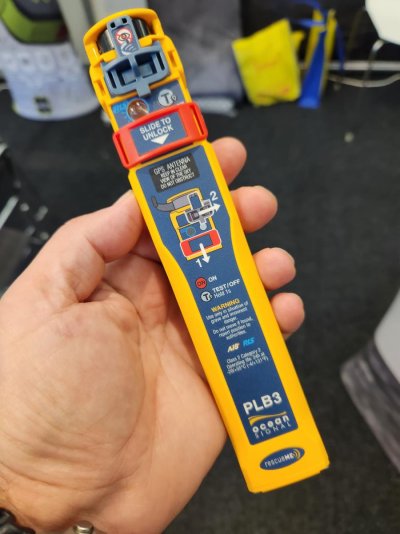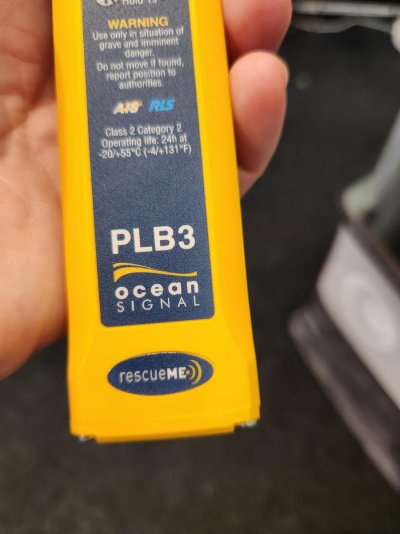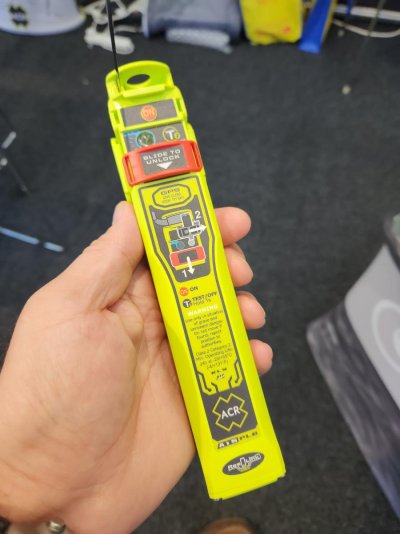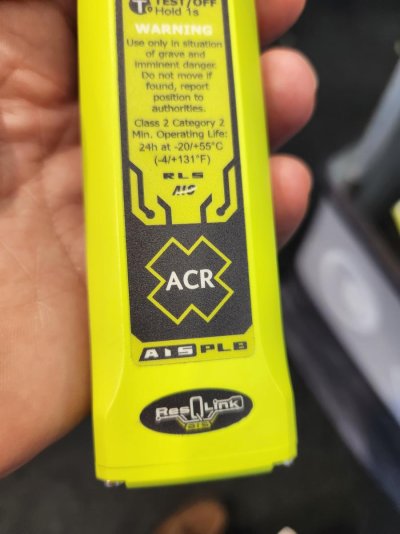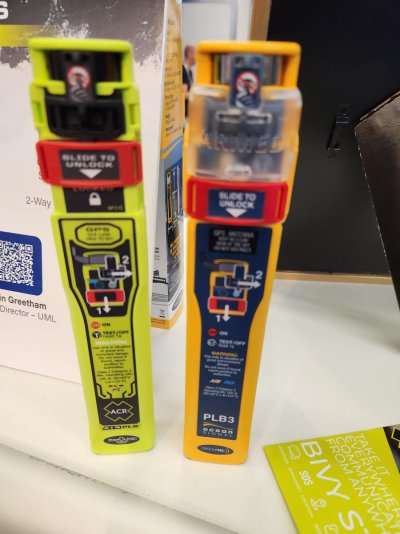psneeld
Guru
I give up. Yes I know that. But I also know over the last few years more and more sailors are now carrying personal AIS rather than gps only PLBs. Position isn’t everything. Getting the person out of the water quickly and safely is. Given just about every MFD gives you a AIS position on your screen in real time can you accept it greatly enhances odds of recovery of a live person? Even with drift or in a raft. In the past on a small boat you were taught to hit the MOB button, drop a MOM then search. Sure that’s still true but having the person in the water actively transmitting a AIS signal is a game changer in my mind. You can look at your MFD and go to where they are now.
PSN I’m not a professional SAR but I’ve been on the other side of this for 35+ years thinking about how to keep me and crew safe. Say whatever you want they definitely compliment each other.
Looking at the forest not one tree OP asked how to spend his money.
Have a handheld and ships DSC vhf and know how to use it
Get a personal AIS/gps unit for your self and crew
Get a raft appropriate for where you may find yourself.
Have a ditchbag appropriately stocked.
If offshore have some form of Satphone and ships epirb.
Then you’re covered for fire, sinking, medical emergency and MOB. Ships epirb doesn’t help much with MOB to my thinking.
As said we’re replacing our PLBs with the linked combo units as cruising kitty allows. Being coastal now I’m not replacing the ships epirb battery and will depend on the combo units. Now that’s my decision without any nitpicking. Given the ACR unit isn’t that expensive but still a boat buck for two think the OPs and my money is better spent there then on a ships epirb. Outside helicopter range definitely necessary but doesn’t sound like he’s crossing oceans. Have fun nitpicking.[/QUOTE
Don't give up...but before you go, reread post #3 (if you ever did). Think I posted they compliment each other right off the bat. Post #27 reaffirms their combined usefulness.
No one doubts your savvy as an offshore skipper, we all know how different it can be than inshore, but lets not forget the similarities either.
If I nitpick it's because I believe someone is making a misleading statement that taken by someone else that could cloud their judgement on skippering or buying equipment. If you have ever noticed, I usually don't get into the many BS "feel good" discussions or at least bow out after I think I have made my point about correcting an error/misstatement.
That's why on a lot of tech stuff i always recommend a lot more research that what is usually posted on many these threads due to everything from just different points of view to flat out incorrect information.
You may not agree with many things I say, but if it's safety at sea, I can only say that the devil is in the details. Sometimes they separate between survival and something worse. I see too many skippers applying knowledge they have read and use it like a cookbook rather than stepping far enough back to see the big picture.
Last edited:

